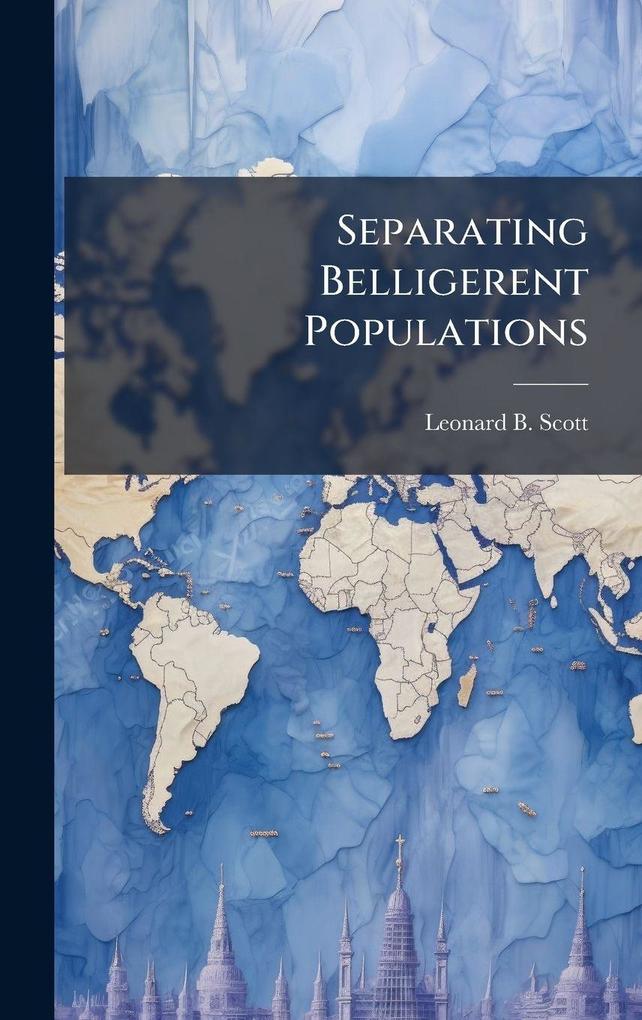
Zustellung: Mo, 25.08. - Fr, 29.08.
Versand in 2 Wochen
VersandkostenfreiBestellen & in Filiale abholen:
Ethnic and sectarian conflict is a prevalent form of conflict today. Most of the conflicts on-going today and in occurring the past twenty years have been internal wars between rival groups with ethnic or sectarian identities. Though its causes vary, the brutal nature of its conduct and its far-reaching consequences make it a threat that the international community cannot ignore. As result, the international community has debated the extent to which it should intervene, if ever, in such conflicts. By its actions, the international community has demonstrated its willingness to intervene, often with military force, to mitigate ethnic conflicts. The past twenty years has seen a series of military interventions that have varied in purpose from humanitarian assistance to nation building. Although many of the military interventions have been only marginally effective at best, there is every reason to believe that the international community will continue to intervene to mitigate future conflicts. United States'; military doctrine and tactics, techniques and procedures (TTP) does not specifically address ethnic and sectarian conflict like it has recently done with insurgencies. Its peace operations and subordinate peace enforcement operations doctrine and TTP form the basis for thinking about how to approach military interventions amid ethnic and sectarian conflict. Two relevant peace enforcement operations to consider are separating belligerents and establishing protected areas. Those two peace enforcement tasks are based on an underlying assumption of separation of populations in ethnic conflict. Amid such conflict, the rival populations separate as people flee or are forcibly expelled from their homes. Intervention occurring in such conditions can apply variations of the two peace enforcement operations to maintain the separation of the rival populations and thereby lessen the conflict. The approach an intervention force pursues is largely dependent on the degree and g
This work has been selected by scholars as being culturally important, and is part of the knowledge base of civilization as we know it. This work was reproduced from the original artifact, and remains as true to the original work as possible. Therefore, you will see the original copyright references, library stamps (as most of these works have been housed in our most important libraries around the world), and other notations in the work.
This work is in the public domain in the United States of America, and possibly other nations. Within the United States, you may freely copy and distribute this work, as no entity (individual or corporate) has a copyright on the body of the work.
As a reproduction of a historical artifact, this work may contain missing or blurred pages, poor pictures, errant marks, etc. Scholars believe, and we concur, that this work is important enough to be preserved, reproduced, and made generally available to the public. We appreciate your support of the preservation process, and thank you for being an important part of keeping this knowledge alive and relevant.
This work has been selected by scholars as being culturally important, and is part of the knowledge base of civilization as we know it. This work was reproduced from the original artifact, and remains as true to the original work as possible. Therefore, you will see the original copyright references, library stamps (as most of these works have been housed in our most important libraries around the world), and other notations in the work.
This work is in the public domain in the United States of America, and possibly other nations. Within the United States, you may freely copy and distribute this work, as no entity (individual or corporate) has a copyright on the body of the work.
As a reproduction of a historical artifact, this work may contain missing or blurred pages, poor pictures, errant marks, etc. Scholars believe, and we concur, that this work is important enough to be preserved, reproduced, and made generally available to the public. We appreciate your support of the preservation process, and thank you for being an important part of keeping this knowledge alive and relevant.
Produktdetails
Erscheinungsdatum
22. Mai 2025
Sprache
englisch
Untertitel
Sprache: Englisch.
Seitenanzahl
46
Autor/Autorin
Leonard B Scott
Verlag/Hersteller
Produktart
gebunden
Gewicht
245 g
Größe (L/B/H)
234/156/6 mm
ISBN
9781025121116
Bewertungen
0 Bewertungen
Es wurden noch keine Bewertungen abgegeben. Schreiben Sie die erste Bewertung zu "Separating Belligerent Populations" und helfen Sie damit anderen bei der Kaufentscheidung.










